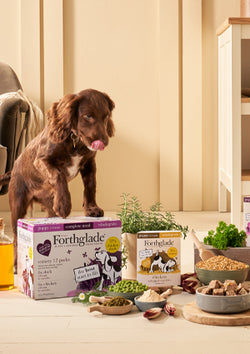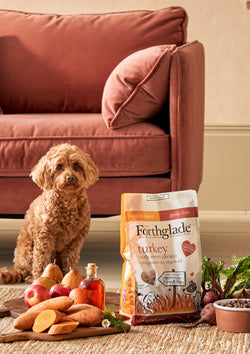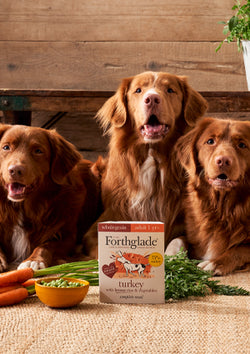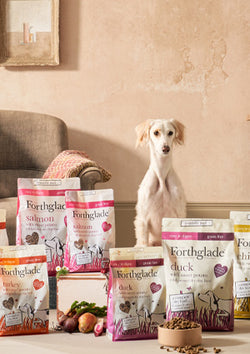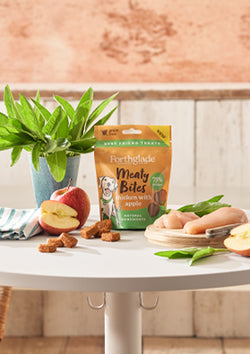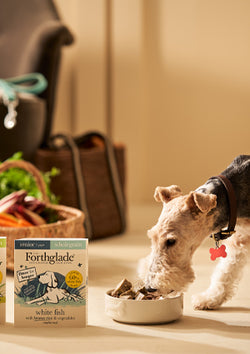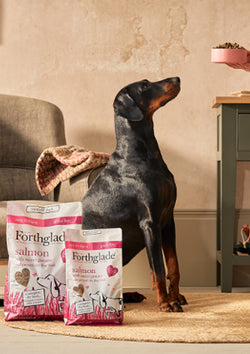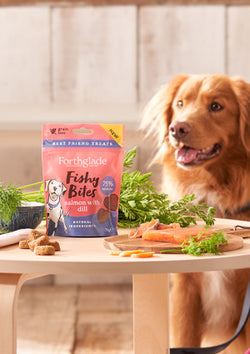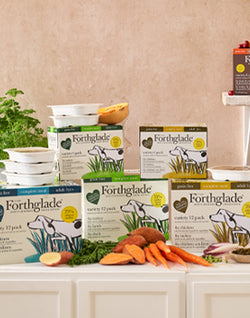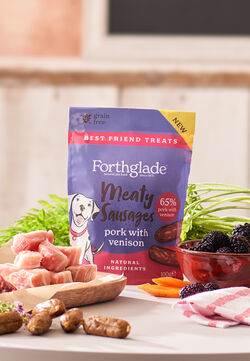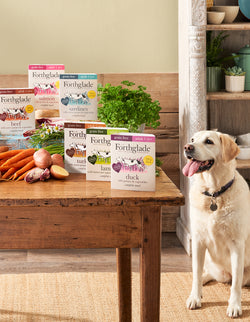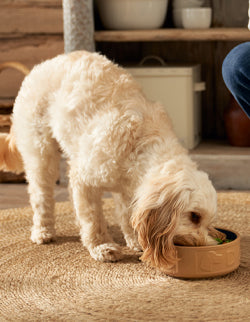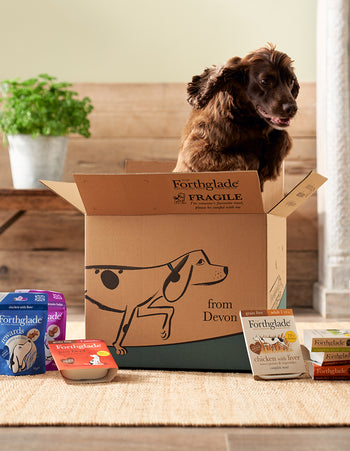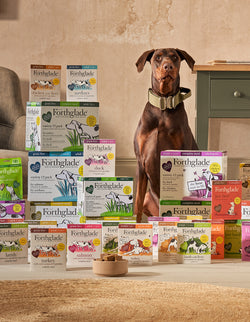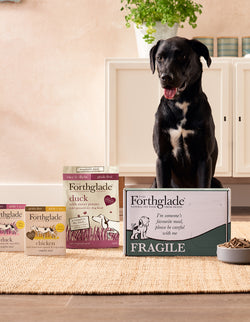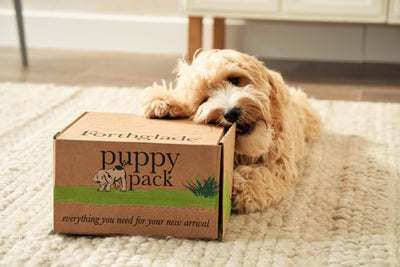
When looking for a dry food option for your dog, you will likely come across two options: ‘traditional heat extruded’ kibble or ‘cold pressed’ kibble. The main difference between these two types of dry food is all in the cooking process and how the ingredients are treated. If you’re struggling to choose what form of dry dog food will best suit your dog, we’ve compiled all the key points you need to know about these different cooking process here to help you make your decision.
So, what is cold pressed dog food?
As the name suggests, cold pressed dry food uses a gentler and lower temperature cooking process to treat the ingredients and form the pellets of kibble. Here at Forthglade, we take natural, high quality, grain-free ingredients and gently press them together in a machine at a low temperature (between 40 - 50 ºC) for just a few seconds to lock in all the natural goodness and retain their nutrients. We end up with full-flavoured easily-digestible pellets of dry food.
Traditional kibble, on the other hand, uses a process called ‘extrusion’ which uses a much higher temperature (around 140ºC) to steam and bind the ingredients together.
What are the benefits of cold pressed dog food?
Thanks to the gentler and more minimal cooking process, cold pressed kibble is much easier to digest and is suitable for dogs of all ages. Unlike extruded dry food, cold pressed dry food doesn’t swell in your dog’s stomach, but quickly breaks down and easily releases the nutrients contained. Because of the lower temperature in the cooking process, more flavour and natural goodness is retained, making the food tastier for your four-legged friend. The natural nutrients and minerals are also more easily retained in the food, whereas higher temperatures tend to break down these elements.
Though there are a few drawbacks to cold pressed food that you may like to have in mind, such as the typically softer texture that it has, which may make it less palatable to your dog depending on their individual preferences. Cold pressed kibble can also sometimes have a slightly higher cost associated and a shorter shelf-life than extruded food, thanks to this cooking process. However, you may feel that these factors aren’t too great in relation to the greater nutritional benefits that your dog would enjoy with cold pressed.
Cold pressed dog food vs kibble: key differences
When looking at these two types of dry dog foods, these are the key distinctions to consider:
- Digestion: The minimal cooking process leaves cold pressed dry pellets much easier to digest, with them easily breaking up when it arrives in your dog’s stomach. Free from any fillers or additives that extruded dry kibble typically contains, also helps makes the food easier to digest and gentle on even the most sensitive of tummies.
- Texture: With the higher cooking temperatures, extruded dry food typically has a drier, crunchier texture (which does have oral health benefits), while cold pressed kibble is softer on teeth (making it especially suitable for puppies and older dogs). It may be that your dog prefers one texture type over the other.
- Nutritional Content: Because we do as little to the ingredients before they reach your dog’s bowl, cold pressed dry food retains all of the natural nutrients, vitamins and minerals from these ingredients. Extruded dry foods lose much of this goodness in the high temperature cooking process, and so artificial vitamins tend to be sprayed onto the food at the end of the cooking process.
- Taste: With little done to the ingredients in cold pressed dry food, arguably the natural raw taste may be stronger and more enticing for dogs than traditional kibble. Again though, tastiness will come down to individual dogs who may not notice the difference in taste as much.

Is cold pressed dog food better than kibble?
While there are numerous factors that you can consider when choosing a dog kibble, from a health perspective cold pressed dog food tends to be more naturally nutritious, easier to digest and better for gut health than traditional extruded kibble.
Cold pressed vs raw dog food: key differences
When considering naturally nutritional diets for their dogs, some owners may look also at raw dog food as an option.
- Nutritional Content: Cold pressed dry kibble retains more of the natural nutrients, vitamins and minerals of its ingredients, thanks to the lower cooking temperature. Raw dog food, however, can vary depending on the ingredients chosen and can often be higher in fat. A lot more work is required by the dog owner to ensure that the amount of food given to your dog throughout the day is nutritionally balanced
- Storage: Like normal kibble, cold pressed dog food doesn’t require refrigeration and is stored in a cool, dry place. Raw dog food on the other hand must be properly stored in a fridge/freezer to ensure there is no bacterial contamination.
- Cost: Cold pressed dry food typically costs a little bit more than traditional dry food, though less than raw dog food which can be costly especially if you opt for diets with high-quality ingredients.
- Digestion: Cold pressed pellets are very easily digestible and break down quickly in your dog’s stomach, thanks to the gentle cooking method and the natural nutrients in the food. Many raw feeders believe that raw food also improves digestibility, though this again depends on the composition of the raw diet. Cold pressed dog food breaks down at the same rate as raw food, and so can be fed together (unlike traditional kibble) or as an alternative feeding solution if your dog is a raw food consumer.
Cold pressed vs freeze dried dog food: key differences
Another form of dry food is freeze-dried dog food – here raw ingredients have water extracted from them, leaving them dried raw food that can be easily stored in a box.
- Cooking Process: While cold pressed is created by cooking ingredients briefly at a low temperature to retain as many natural ingredients as possible, freeze dried food has no cooking or processing stage, with only moisture sucked out to leave natural ingredients behind.
- Cost: Freeze-drying has a more complex cooking process than cold pressed, and as a result tends to be pricier.
- Digestion: Freeze dried food tends to be easier to digest when compared to traditional kibble, though it’s worth bearing in mind that the lack of moisture in the food tends to leave dogs requiring more water throughout the day.
How to store cold pressed dog food
If you’re adding cold pressed to your dog’s diet, storage is easy. Make sure to store the bag in a cool, dry place and once opened, consume within four months.
If you’re looking to feed a naturally nutritious dry dog food diet packed full of natural nutrients, vitamins and minerals, our cold pressed dog food is a great option for your dog, suitable from ages 2 months+.





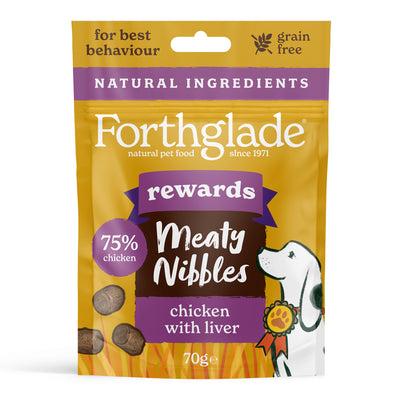
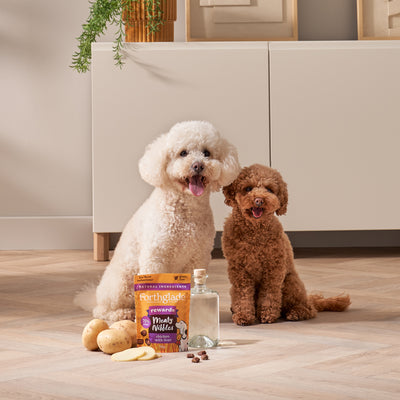






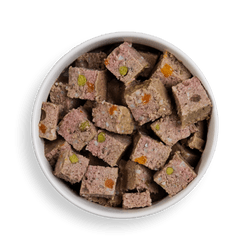

 Over 7,339 5* Reviews
Over 7,339 5* Reviews
 Established since 1971 - Made in Devon!
Established since 1971 - Made in Devon!
